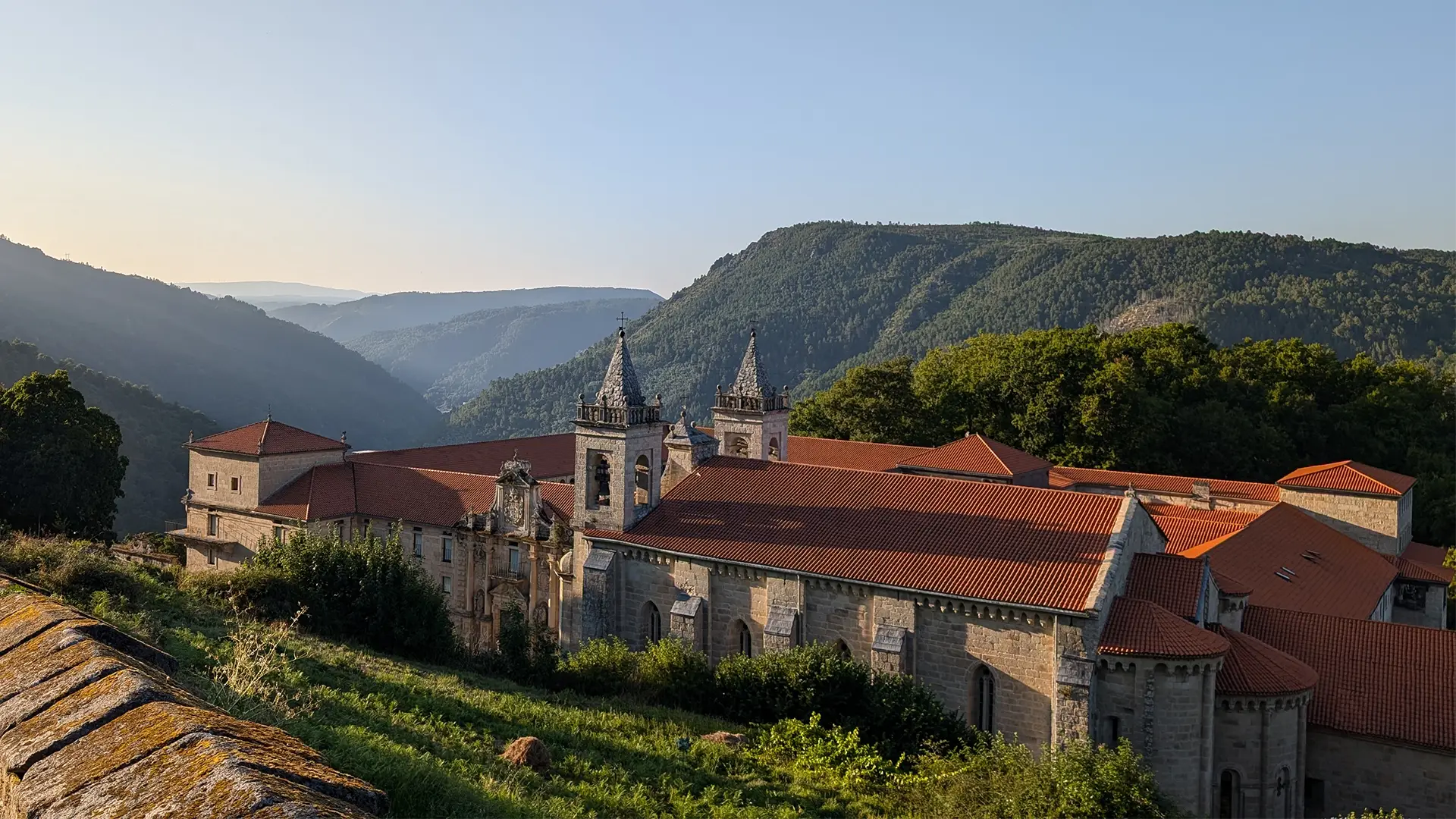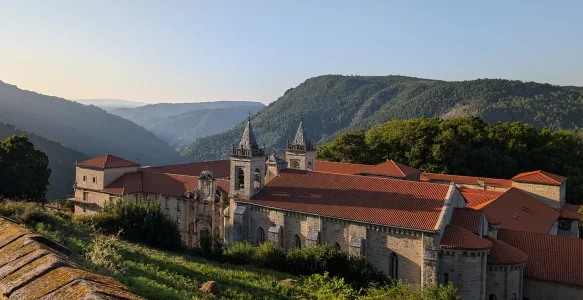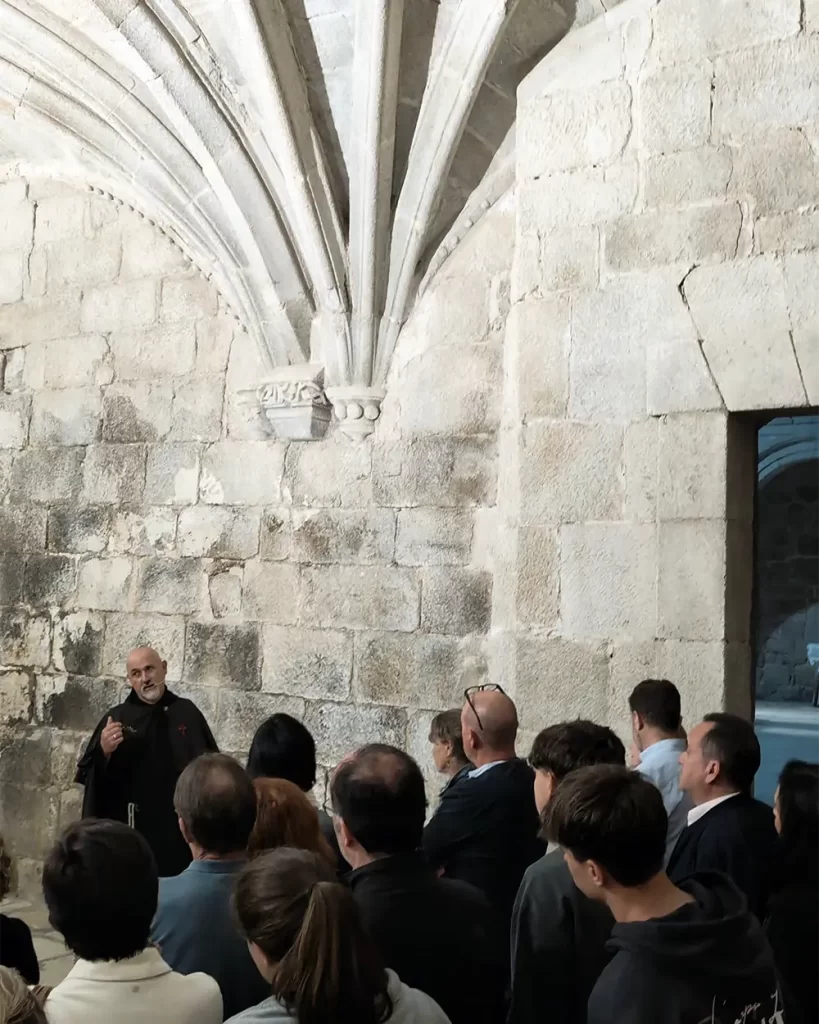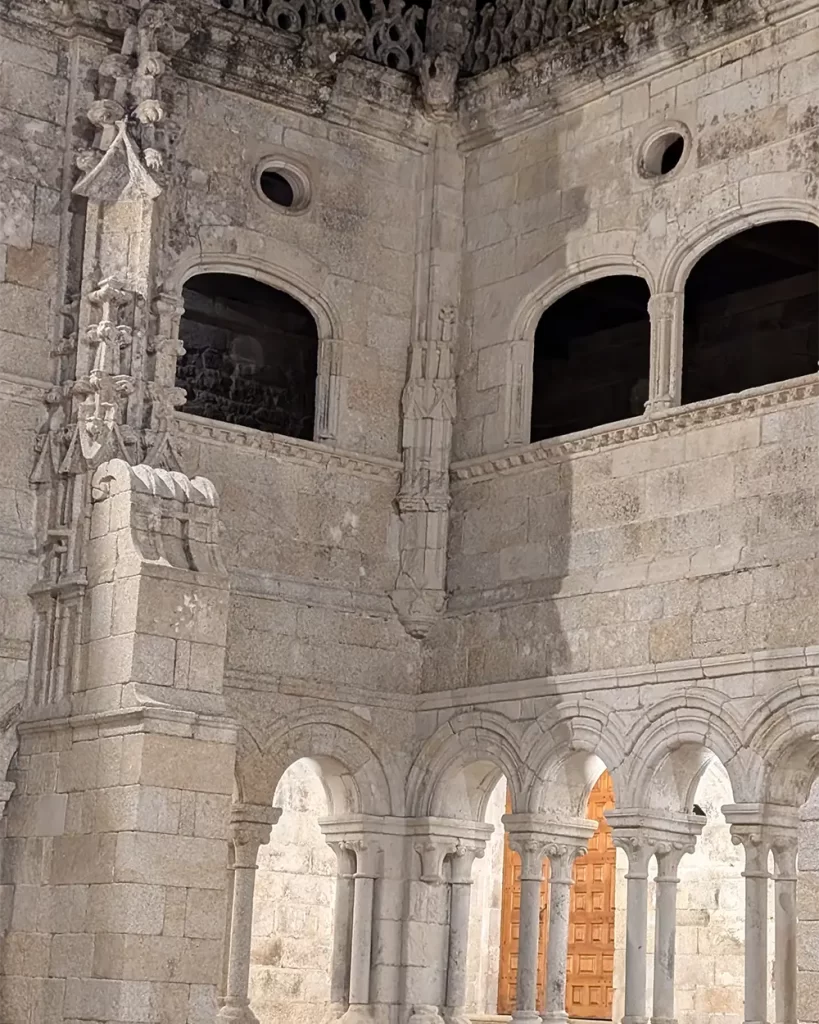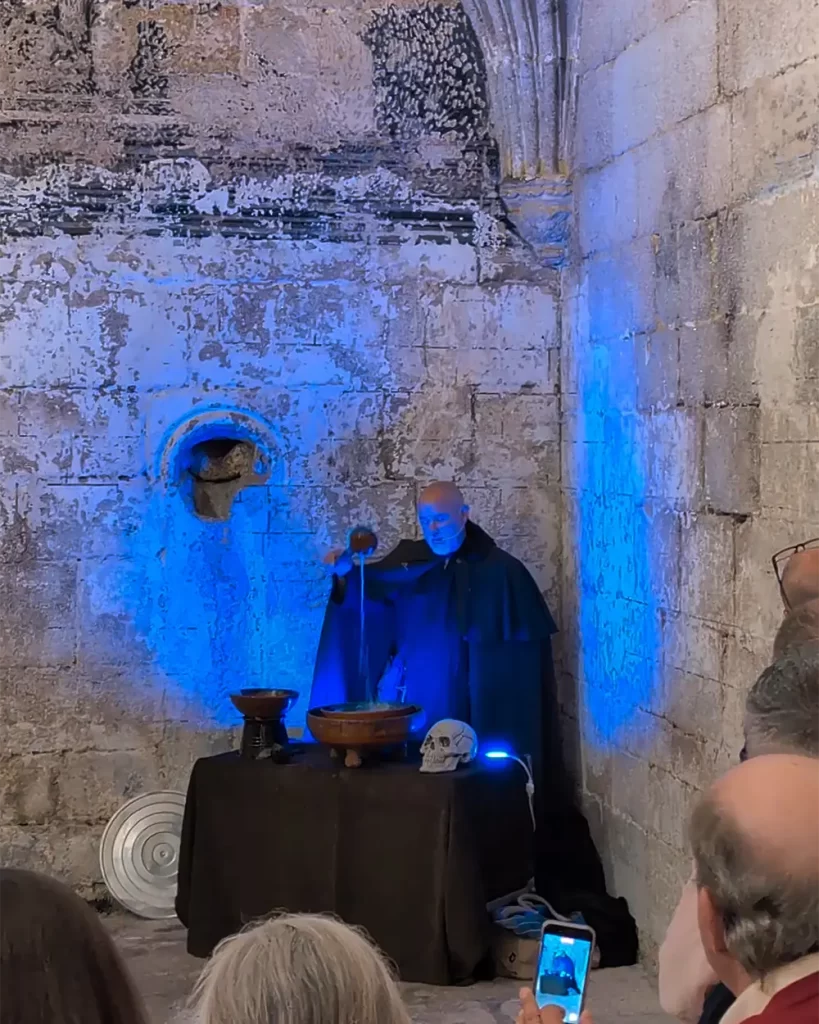Spain’s Paradores are renowned for offering a unique experience, often located in historic buildings such as monasteries, castles, and palaces, providing a distinctive stay.
In the heart of Galicia, the Monastery of Santo Estevo de Ribas de Sil (Monasterio de Santo Estevo de Ribas de Sil) is a perfect example of this. During our stay, we immersed ourselves in the serene atmosphere of a monastery that carries centuries of history, while enjoying modern comforts. In this article, we’ll share our experience and offer some useful information for anyone considering this type of getaway.
If you’re planning your stay in a Parador and want to know where they’re located, how to book, and other practical tips, we recommend checking out this article with a complete guide to Spain’s Paradores (coming soon)

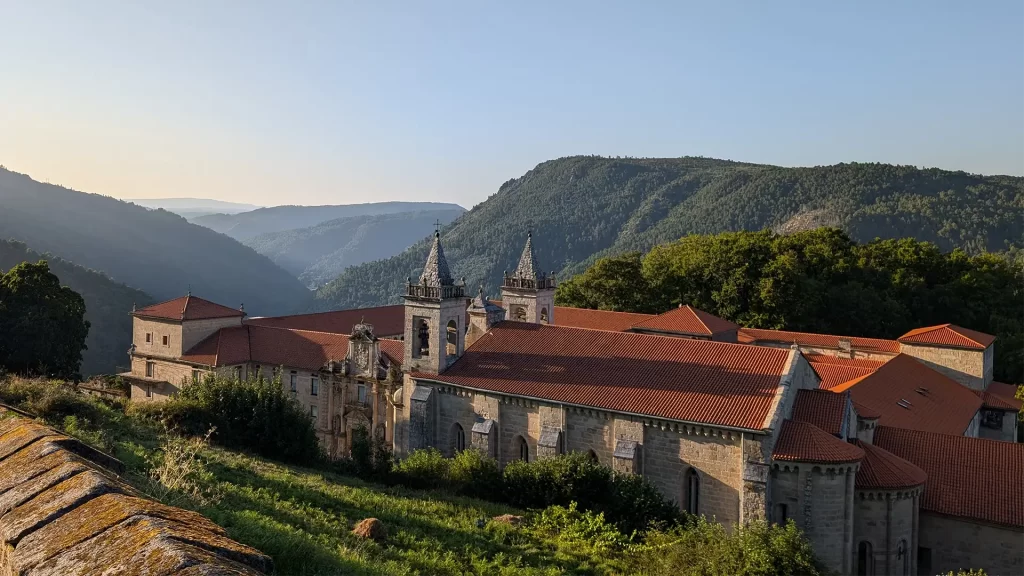
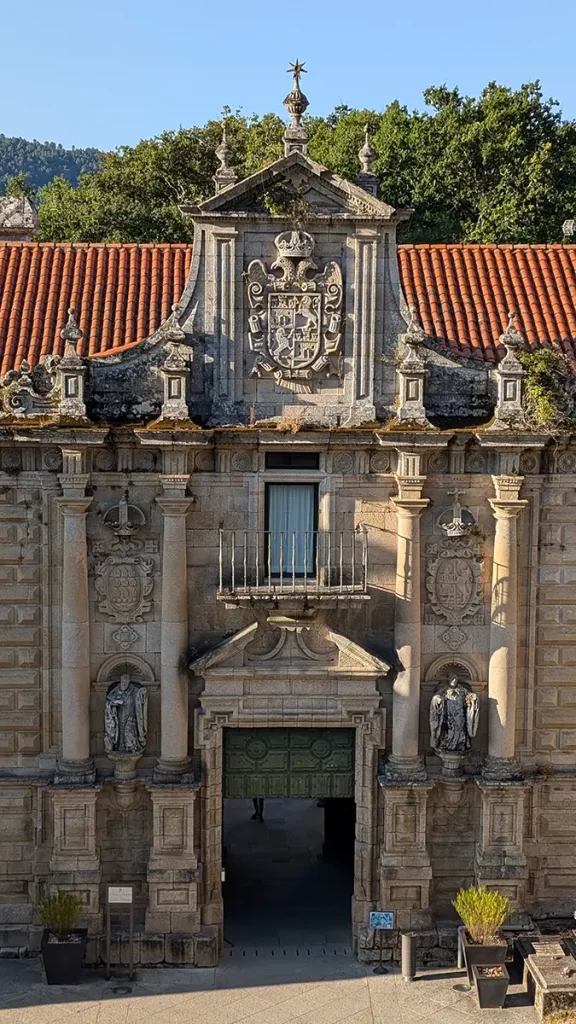
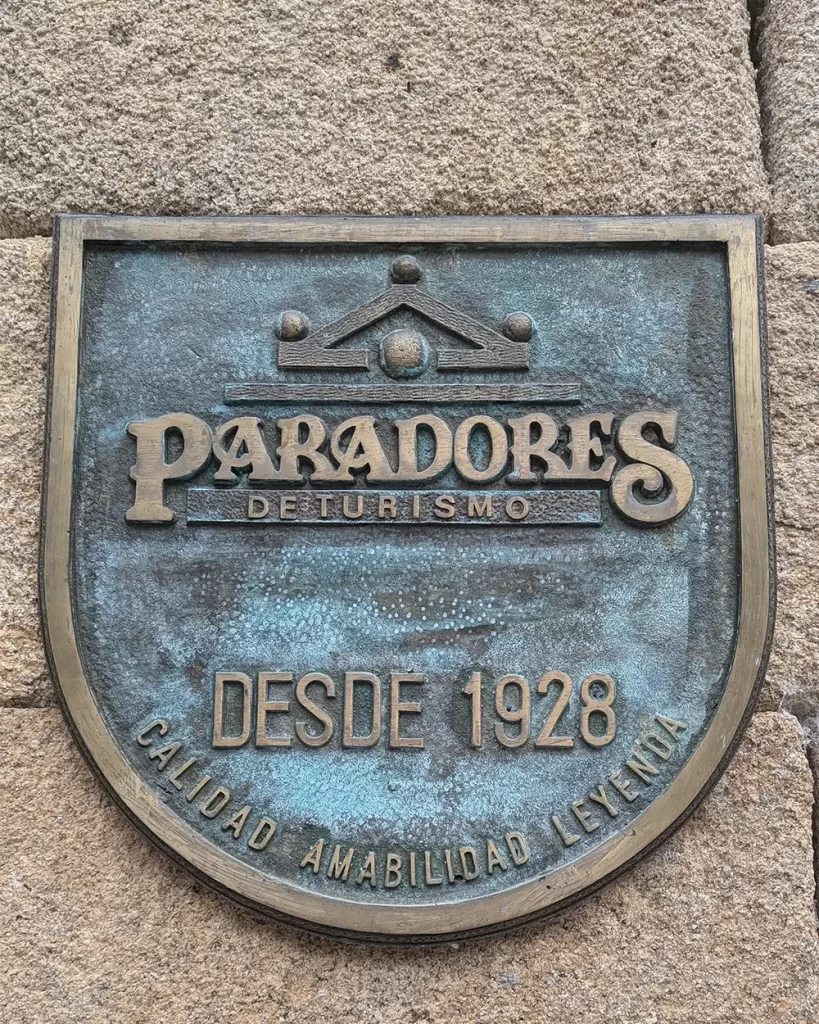


What is a Parador?
Paradores are a network of hotels in Spain managed by the Spanish government, known for their connection to the country’s cultural and historical heritage. Unlike conventional hotels, Paradores are often located in historic buildings, such as medieval castles, convents, monasteries, and palaces, which have been restored to preserve their authenticity.
Paradores are also famous for their gastronomy, often featuring traditional dishes from the region where they are located, offering an authentic Spanish culinary experience. Therefore, staying in a Parador provides a complete immersion in local culture, combining history, comfort, and gastronomy all in one place.
The Monastery of Santo Estevo de Ribas de Sil
Located in the Galician region, it is one of Spain’s most iconic monasteries, with roots dating back to the 6th and 7th centuries. Originally inhabited by Benedictine monks, its isolated location in the heart of Ribeira Sacra (almost no mobile signal!) contributed to its role as an important spiritual centre in the Middle Ages.
History and Evolution
During the Middle Ages, it became one of the wealthiest and most influential monasteries in Galicia. However, over time, it began to decline. In the 19th century, following the Mendizábal Decree – a process of expropriation and sale of ecclesiastical properties in Spain – the monastery was abandoned and fell into ruin. Thankfully, in the 20th century, restoration work began to preserve this important historical heritage.
Transformation into a Parador
In the 2000s, it was carefully restored and transformed into a Parador, becoming part of the national network aimed at promoting tourism in places of great historical and cultural value. Today, the Parador Monasterio de Santo Estevo offers its guests the opportunity to stay in a building rich in history while enjoying all the modern comforts.
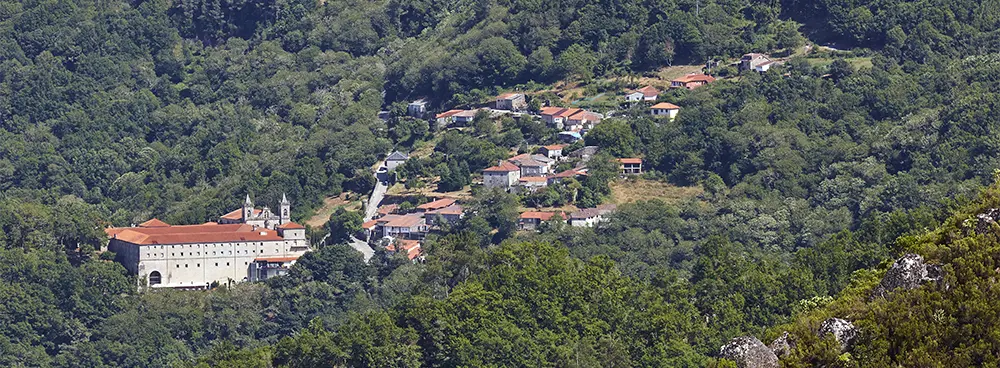
What is it like to stay at the Monastery of Santo Estevo?
The journey to the monastery is an experience in itself. The road is narrow and winding, typical of a mountainous region, which can make the journey challenging, especially because Google often suggests even narrower routes. The park around it attracts visitors interested in hiking, but only guests and those on tours are allowed to drive down to the monastery. A security guard at the entrance checks the names on the list, ensuring that only those with a reservation at the Parador can access it.
As you drive down the road leading to the Parador, the view is stunning. The Monastery of Santo Estevo stands isolated, surrounded only by mountains and a small, almost deserted village nearby. The check-in process is efficient, and soon you head up to your room. At first, it can be a little tricky to get used to the layout of the place, as the hotel is huge and has three main cloisters, with the rooms spread around them. The first impression is, without a doubt, striking.
Accommodation and Facilities
Despite its age and history, the Monastery of Santo Estevo has been renovated to provide all the modern amenities. Don’t worry, the bathroom is from this century! Lifts, air conditioning, and other comforts have been integrated. For example, the new flooring was placed over the original to preserve the historical floor.
The room we stayed in was spacious and bright, with a large and comfortable bathroom. The view from the room overlooked the park at the back of the monastery, where the trails begin. The landscape is lush, filled with trees and nature, providing a peaceful and serene backdrop that perfectly complements the historical atmosphere of the Parador.


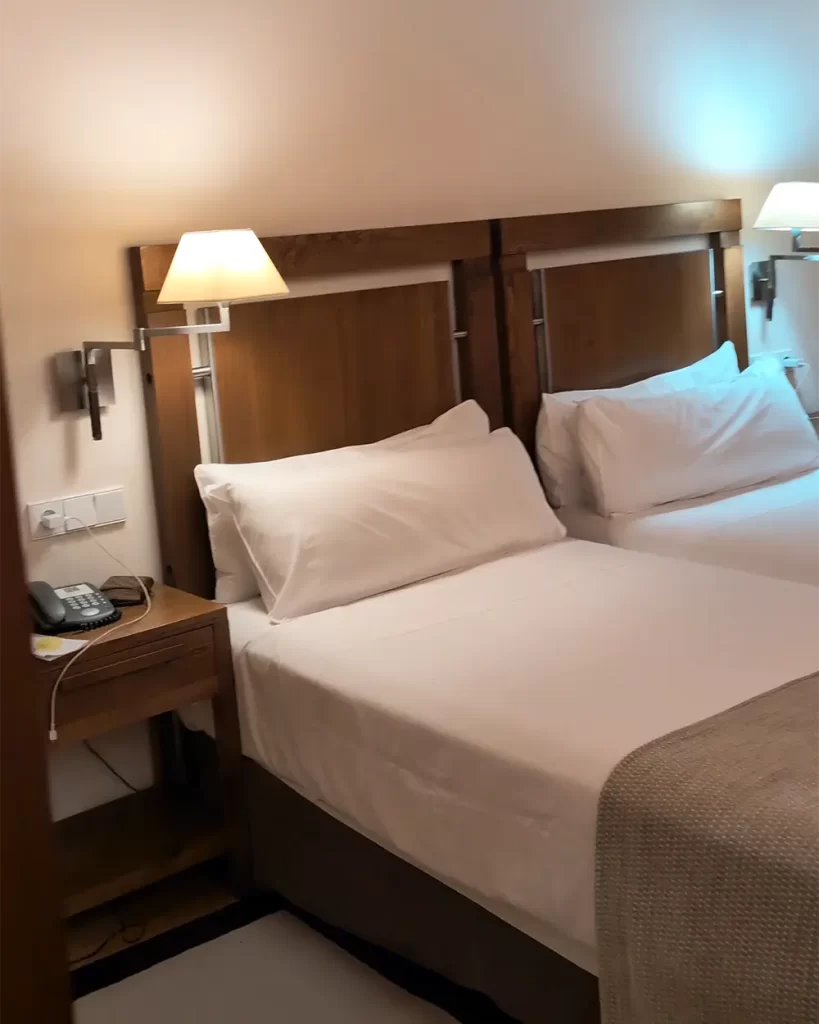
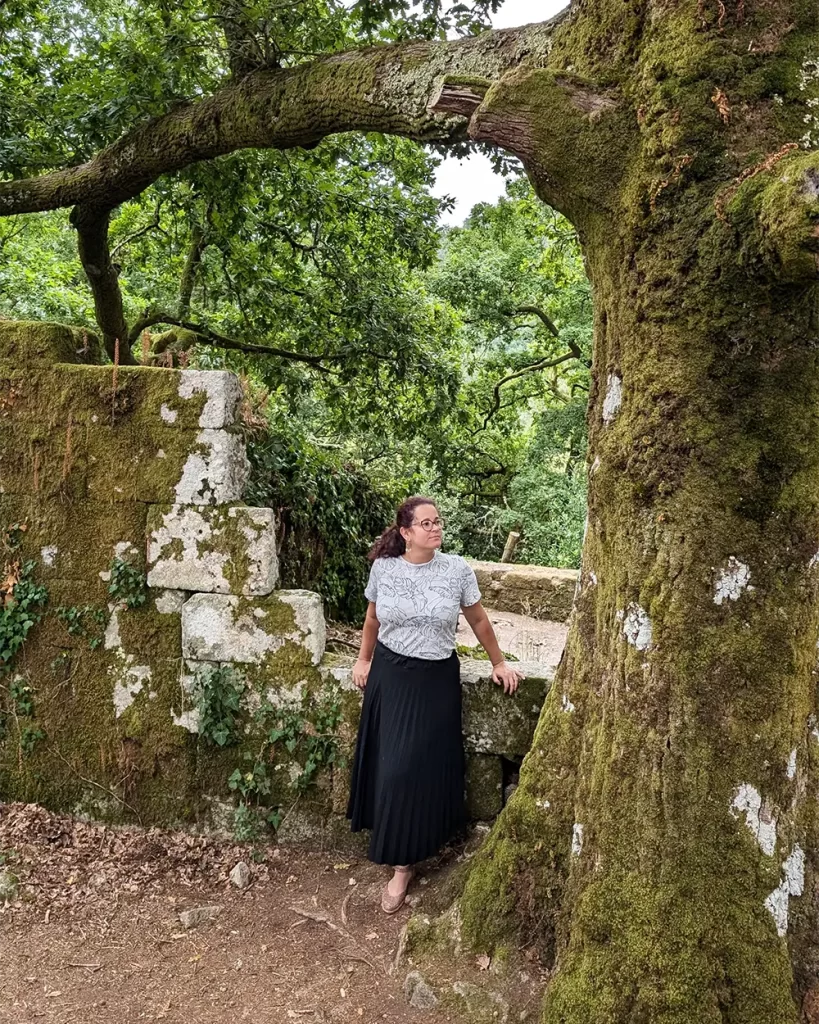

Activities
Hiking and Nature
The monastery is located in a mountainous region surrounded by lush nature, making the trails around the Parador a major attraction. There are several trail options, some extending up to 10 kilometres, allowing visitors to explore the surroundings and enjoy direct contact with nature. Unfortunately, during our stay, we didn’t have the chance to try any of the trails, but for hiking enthusiasts, these trails offer spectacular views and an immersion in the serenity of the environment.
If you want to explore more activities in the region, such as visits to viewpoints, wineries, and boat tours, check out our complete guide on what to do in Ribeira Sacra.
Theatrical Visit to the Monastery
Another activity worth highlighting is the theatrical visit to the monastery, which takes place at 11:30 pm (yes, very late!).
During the tour, an actor dressed as a monk guides visitors through the historical corridors, revealing curiosities and stories about the place. The experience offers an interesting way to learn more about the monastery’s past. However, for those not accustomed to theatrical Spanish, the tone may sound a bit exaggerated, like “voiceover” style (let’s just say Spanish voice acting isn’t the best in the world).
The tour concludes with the Queimada Galega, a traditional ritual from Galicia. The drink, made with aguardente (a type of spirit made from grape skins), sugar, fruit peels, and coffee, is flambéed while an incantation is recited to drive away evil spirits. Served hot, the Queimada is delicious, with a sweet taste, citrus notes, a touch of bitterness, and a slight smokiness.
How Much Does it Cost to Stay at the Parador de Santo Estevo?
The Parador de Santo Estevo offers a luxurious experience in a historic location, and this is reflected in its prices. In 2024, during the high season, from summer until mid-October, the nightly rates range from €350 on the most expensive days to €202 on the more affordable days. The lowest price found during this period was around €160 per night.
With the arrival of November, the low season begins, bringing more affordable rates, with nights starting from €100. Additionally, there is the Amigos del Parador programme, which offers members a 5% discount on bookings, helping to reduce the overall cost of your stay.
What About Dining?
The hotel offers two dining options for its guests: a restaurant and a café.
At the Parador’s restaurant, you can enjoy a full dinner, with an average cost of €30-50 per person (although some dishes can be quite expensive). The restaurant provides a more formal atmosphere and a menu featuring typical regional dishes, perfect for those seeking a more refined gastronomic experience.
The café offers a simpler and more informal option, ideal for those looking for light and quick meals. You will find salads, sandwiches, and other practical options, with prices around €20 per person.
For breakfast, the Parador offers a buffet for €21. However, if you prefer a lighter meal, you can opt to pay individually for each item. For example, I don’t eat much, so I had fruit, yoghurt, and coffee. I put together my breakfast for about €10, choosing only what I wanted to consume.

How to Get to the Parador de Santo Estevo?
Getting there might seem like a challenge, especially since it’s located in a rather isolated area, in the heart of the Galician mountain region. The best (if not the only) way to reach it is by car, as relying on public transport can be tricky given its remote location.
Using a GPS makes the journey easier, and the road is well signposted. However, here are some basic directions. Driving to the Parador de Santo Estevo allows you to explore the region with more freedom, and although the route can be challenging, it’s all part of the experience of staying in such a special place.
- From Lugo or Monforte: Take the N-VI towards Nadela, then the C.G 2.2 to Monforte. Continue on the N-120 to Os Peares, then head to Luintra and follow the signs to the Parador.
- From Santiago, Coruña, Vigo, or Pontevedra: Take exit 230 from the A-52 towards the centre of Ourense. Follow the signs for “Ribeira Sacra, Cañón do Sil” and then “Ribeira Sacra Sur via OU-536“. Continue until you see the signs for the Parador.
- From Madrid: Follow the A-52 to Ourense and use the same directions as for those coming from Santiago or Coruña.
To Conclude, Is It Worth It?
Although the price is higher than that of conventional hotels, the experience of staying in a thousand-year-old monastery, surrounded by the beautiful nature of Galicia, justifies the investment. The dining options, from the restaurant with typical local dishes to the more casual café, cater to different preferences and budgets. Additionally, the activities offered, such as the hiking trails and the theatrical visit, enhance the stay, providing unique moments.
If you’re seeking a one-of-a-kind experience that combines history, culture, and comfort in a spectacular setting, the Parador de Santo Estevo is, without a doubt, a must-visit. It’s worth every moment spent in this magical place (and every penny we spent there), where the past meets the present in perfect harmony.
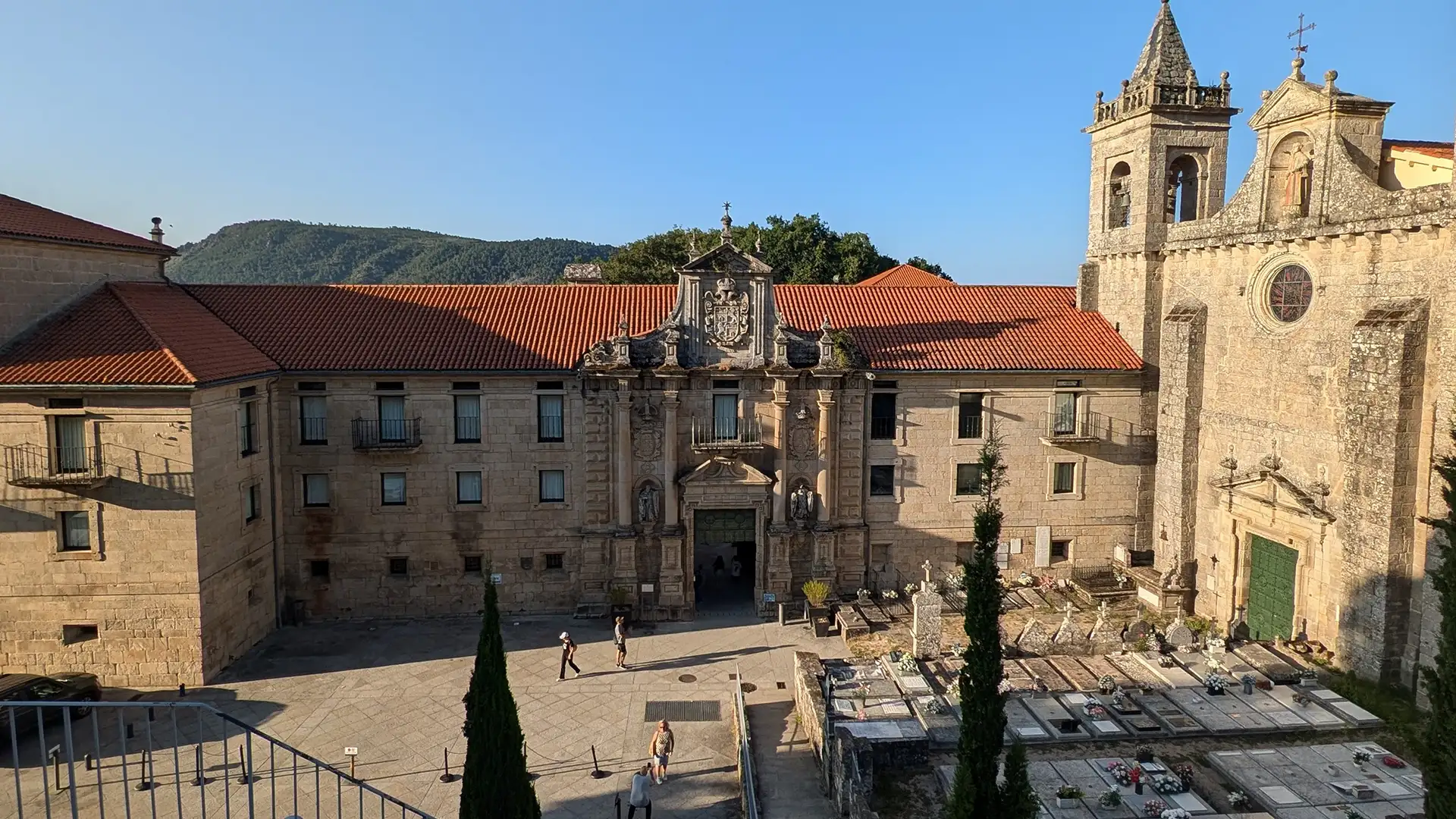
Plan Your Next Stay in a Parador
Did you like the idea of staying in a place full of history, like the Monastery of Santo Estevo? We’ve created a complete map with the location of all the Paradores in Spain.

